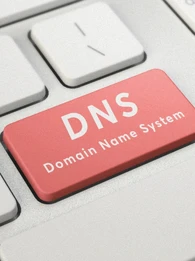
We’re all now part of a massive worldwide experiment about the very definition of work. Remote, in-office — or tightrope walking along some sliding scale between the two?
How each business and each worker finds the next new work-life balance remains an ongoing "work in progress." In the post-rapid adoption of remote work world -- a full two and half years after the onset of COVID -- there’s no definitive answer on which approach to hybrid work works best.
And the technology tools and solutions — many designed for an earlier in-office era — are not necessarily up to the task. The perceptions and preferences of bosses and workers alike are in a seemingly unending transition. Nothing quite seems fit for the new, still-to-be-defined purpose.
So, what is the eventual end-state of hybrid work? Will the process of finding it provoke new forms of innovation, opportunity, and technological success? Or will productivity and work-life balance suffer amid a period of tension, power plays, and years of seesawing trial and error approaches to hybrid work?
Stay with BriefingsDirect to explore here the drivers and opportunities to get the future of hybrid work right -- perhaps sooner rather than later.
Listen to the podcast. Find it on iTunes. Read a full transcript or download a copy.
To learn more about what makes hybrid work move to an arc of opportunity, and not wallow in a trough of complexity and confusion, please welcome Amy Haworth, Founder and CEO of Nobody Makes it Alone, and Tim Minahan, Executive Vice President of Strategy at Citrix. The conversation is moderated by Dana Gardner, Principal Analyst at Interarbor Solutions.
Here are some excerpts:
Gardner: Amy, there seems to be an interminable debate nowadays about the future of work. The previous models don’t give us a lot to easily fall back on as precedent for hybrid models. Companies are struggling to find the best fit for them and their employees.
So, are most workers going to be fully remote? Mostly in the office in the nine-to-five, five-days-a-week model of yesteryear? Or will there be some yet-to-be-defined golden mean, or equilibrium, between the two sides of the equation?
Employees opt for hybrid-work
Haworth: I’m so glad we’re having this conversation because you’re right. Companies are struggling. We’re seeing that in headlines every day about which employees are being called back into the office full time as a reaction that’s becoming a top-down mandate.
That’s been the trend. Companies are trying to figure this out. Do they work fully remote? If they do go hybrid, are they mandating a certain number of days in the office versus allowing employees the flexibility to choose?
And I love what you said about the “arc of opportunity” in comparison to a “trough of complexity.” It feels like that’s becoming the choice. Are companies going to hang on the arc of opportunity versus those that are returning to what they perceive as more certain, which really is the model of yesteryear.
Citrix recently did a global survey and the results to me are fascinating. They started by asking employees what they preferred. The data shows that 57 percent of employees prefer hybrid models that allow them to work remote or in the office. And 69 percent, that’s a big number, 69 percent said they’re going to leave their job if they aren’t given that option.
This tells us, from an employee point of view, that demand for flexibility is clearly there. And I hope companies realize, if they haven’t already, that to truly attract and retain talent for the long term, they’re going to have to figure out how to make this choice an option and make it a permanent part of their workforce strategy.
Gardner: Looking at some of the other findings, it seems that the hybrid work model – even as it was foisted on us -- does work well for many people. I see that 69 percent of the hybrid workers surveyed said they feel “productive,” compared to 64 percent of remote workers, and 59 percent of office employees.
So that flexibility is paying off from their perception. Also, nearly 70 percent of hybrid workers say they feel “engaged” compared to a much lesser degree, 55 percent of remote workers, and 51 percent of in-office employees.
So why is there ongoing tension? Why do we have this demand to return to the past when the current new hybrid state seems to be working for so many people?
Haworth: There’s an interesting dynamic I’m starting to sense. Typical human behavior is that in times of great uncertainty, the human brain tends to latch on to that which feels certain. And so even if we think about the macro environment outside of work, there’s still a lot of uncertainty.
The results from the Citrix survey show 70 percent of hybrid workers have a strong emotional connection to their organization and leadership, as compared to 60 percent of remote workers and 58 percent of in-office workers.
For example, we thought we had hit our uncertainty high during 2020 when COVID peaked. But what’s come at us is more and more uncertainty. One hypothesis is that this is an organizational reaction to try to control what feels uncontrollable.
But there’s a real risk because the impact on outcomes, results, and costs is driving outcomes and accountability within the ethos of an organizational culture. Going backwards -- to dictate how we work, almost like a parental order – is perceived as a top-down ruling. But the cost to workers is going to come in the form of a detriment to well-being, both physical and mental.
When we look at the results from the Citrix survey, 70 percent of hybrid workers say they have a strong emotional connection to their organization and leadership team. That’s compared to 60 percent of fully remote workers, and 58 percent of in-office employees. Similar numbers show up when it comes to well-being, with 70 percent of hybrid workers report good well-being, compared to 61 percent of fully remote workers, and 60 percent who are only in the office.
What struck me about all these numbers is in-office employees scored lower across all of these categories: productivity, engagement, emotional connection, and well-being. We really need to pay attention to both what’s not working and to also dive into what is working. Clearly something is working across all these domains for the hybrid worker. And that’s really important, because being inspired by our work, as we know, drives performance. It drives commitment, it drives loyalty. It drives innovation.
Organizations need to be asking the big question -- not necessarily which model is right, but which drives the best outcome for organizations and people. And from there, we can figure out how to make this work.
Gardner: Tim, given these findings, why are so many companies still resisting flexible and hybrid-work models? It seems as if what we saw over the past year and a half is backtracking. Why do you think that’s the case?
Trust is a must
Minahan: People like to label of a lot of things. It’s not a remote-work issue. It’s not a return-to-office issue. It’s not a quiet quitting issue. What we have here is a trust issue.
Despite clear findings from countless studies -- from Citrix, from PwC, Journal of Economic Perspectives, and countless others -- showing that remote work yields measurable improvements in productivity and retention, leaders -- including those that tend to pride themselves on being “data driven” -- are just ignoring the facts by pushing employees to return to the office.
In fact, our latest research at Citrix finds that nearly half of managers, despite all the evidence and experience they had in their own companies during the pandemic, just don’t trust employees to get work done when they’re outside the office.
In a recent study we did, 48 percent of managers reported using tracking software on their employees’ machines to measure their keyboard time when working remotely. I know, Dana, we’ve had conversations before on best practices for hybrid work, and during those, I warned that the biggest risk to getting all the benefits that Amy talked about by embracing more of a hybrid-work model was creating policies and culture and a technology stack that gave employees all equitable access to the applications, the information, as well as career advancement opportunities -- regardless of where they work, in the office or remotely.
Unfortunately, some leaders are now valuing face time over business outcomes. And you know, researchers have labeled this dynamic as proximity bias, and at its core is really a lack of trust and outdated ways to measure employee contributions and engagement.
Gardner: Of course, Tim, trust is hard to measure in a data-driven world. Do you have any sense of how trust can be measured as a business success indicator?
Minahan: The orientation is all about productivity. For example, The Journal of Economic Perspectives researchers ran an experiment in which they selected an unnamed NASDAQ-listed company and they randomly assigned call center employees to work from home and had a control group working in the office.
They found that working from home not only resulted in a 13 percent increase in productivity -- those workers working remotely actually were more productive than those in the office -- but they had a 50 percent lower attrition rate. When you think about dynamics like that, especially in the tight labor market that we have right now, there are real business benefits and real ways to measure the benefit of embracing a much more flexible work environment.
Gardner: Amy, you’ve been coaching a lot of companies that are working to find the right work balance. What is top of mind for you when it comes to the keys to hybrid work success?
Connected work creates better outcomes
Haworth: Piggybacking on this idea of trust that Tim brought up, what I’m hearing is a needed emphasis on trust and connection. Sometimes what we’re going for and what we’re trying to explain -- and what my clients are trying to explain – revolves around connection or trust.
What is that secret sauce to attain that? If we step back, and think about our lives outside of work, what creates trust and connection between people? It far exceeds anything we’re doing organizationally, but it can absolutely be put into our organizational structures.
Think about that. Why do you decide to trust someone? Most likely, it’s because you found a place where you shared something, perhaps a vulnerability, and it’s been reciprocated and held in a safe and shared space. Or you connected because you found some sort of similarity.
I'm seeing organizations having a knee- reaction because they’re sensing that this idea of connection, which is fuel for trust, is missing. And so, they’re putting the workplace as the proxy for building that. The challenge is that in the last couple of years, we’ve distributed our workforce. If we’re using workplace as the proxy for connection making, we are leaving out, in so many cases, people who are not in the office anymore. That is one of the challenges with hybrid.
If companies are mandating that employees who have the option to be in an office, come into the office a certain number of days, they’re actually going to start to find that unless they teach organizations how to create connections, that they’re fueling disparity. And they need to be focused across-the-board on new ways of creating connection. How do we make it okay to not have our meetings be all about getting things done? We know that this style of working drives productivity, but we also need to be thinking about how it can drive connection -- and not just for one group who has access to an office, but for everyone.
The key is to help organizations be successful by naming what is missing in their culture, and then to set up focused efforts to build that capability so that there is fairness, safety, belonging, and connection for everybody.
Minahan: Amy and I have had this discussion before. It really boils down to those companies that are most successfully leveraging this moment to create entirely new work models that benefit both their organizations and their employees. It means delivering meaningful work, giving employees the tools, information, and assignments needed to drive innovation and creativity and the business outcomes for the company.
Certainly, there is a value in bringing employees together, that connectivity that Amy mentions. The ability to do strategic planning, the ability to collaborate in certain ways, and the ability to meet with customers. It’s about creating social networks with your fellow employees, so you see them as humans rather than, you know, a bodyless face on a video call. All of that has value.
But for those companies that are figuring out the secret sauce, it boils down to providing meaningful work and purposeful office time.
Gardner: As we talk about meaning and trust, that strikes me as closer to a relationship than a transaction. Much of the technology has been developed around transactions. Technology is inherently transactional. It seems to me that we need to look differently at technology as a way to increase the richness and value of the relationship between the employee and the employer.
Amy, is that the case? Are we not using technology appropriately? Do we need to think differently about the use of technology to foster better relationships that lead to more trust that then can deliver higher productivity?
Technology enhances work interactions
Haworth: Technology has a huge opportunity to be a catalyst to help create better connections in the way we see and experience each other. At its core, it’s about human experience. People need to be seen and heard.
There are some exciting innovations when it comes to the tools, even in my world of the human resources (HR) stack. We’re starting to see an amplification of recognition tools, of coaching platforms, of new and exciting ways to learn that are leveraging mobility and looking at how people want to work and to meet them where they are, rather than saying, “Here’s the technology, learn how to use it.” It’s more about, “Hey, we’re learning how you want to work and we’re learning how you want to grow, and we’ll meet you there.” We’re really seeing an uptake in the HR tech space of tools that acknowledge the humaneness underneath the technology itself.
Minahan: During the pandemic, we introduced new tools to allow employees to execute work in the most efficient way possible and collaborate in a more virtual sense. I believe we’re now getting to the point where the metaverse is blending with the workplace.
When you think about tools that companies embraced during the pandemic out of necessity -- communication and collaboration platforms such as Slack, Teams, and Zoom – they were emulating the physical world and physical collaboration environments. That includes things like digital whiteboard tools, and content collaboration tools, for redlining and sharing, and all of that.
A top priority for IT executives everywhere is creating the optimal hybrid work stack. ... We're emulating the physical world and physical collaboration.
But right now, one of the top priorities for IT executives everywhere is creating the optimal hybrid work stack. And that stack has multiple layers. One certainly is the collaboration layer, as we talked about. How do I bring together all the collaboration tools necessary to allow employees to work effectively, execute work effectively, and collaborate effectively when working remotely or in a distributed way?
The second layer consists of the business applications we’ve come to know and love. Those include HR apps, business applications, supply chain applications, and financial applications, et cetera. Certainly, there is a major role in this distributed work environment for virtual application delivery and better security. We need to access those mission-critical apps remotely and have them perform the same way whether they’re virtual, local, or software as a service (SaaS) apps -- all through a trusted access security layer. And then finally we need a suitable device layer, ensuring that employees can work across any device and location.
In our experience at Citrix, in working to bring some of those virtual environments into the physical workspace, for example, we’re retrofitting all of our conference rooms to be team-centric. No matter where anyone is working, they are part of a teams-based collaboration activity because we recognize that in most cases our meetings are going to involve a hybrid model.
Some employees and stakeholders are remote, and some are physically in the office. We’ve therefore also retrofitted our environment with circular cameras so that everyone has an equal box on Teams, we put cameras on the whiteboard so that everyone can be included in every part of the conversation, and they all have equal access to the shared information. We’re not alone in that. A whole host of our customers are examining those environments too, including bringing that metaverse approach into the workplace.
Gardner: Amy, even with all things equal in getting the right technology in place, it seems to me that there’s another part to the equation. Some organizations just foist the technology on their people, and it remains the workers’ job to be the integrator, to find the right process mix among all the different applications.
I wonder if that’s the best way because this isn’t just about accommodating all remote or all in-office work tech; it’s also about the process innovation. Are there some lessons in your experience about how to better deliver technology as part of a business solution?
Are your clients recognizing that workers are not systems integrators and that just logging into umpteen disjointed SaaS apps isn’t going to work if you don’t provide some other ways to help people work with the technology -- rather than be overwhelmed by it?
Keep it simple, secure, accessible
Haworth: Yes, Dana, I see a new hybrid work stack emerging. It’s about unifying, simplifying, and securing the work without an employee needing to figure out how to make that happen. The last thing we want is for the employee to feel like they are part of the IT department.
Instead, we want to rely on our IT counterparts to do what they do best. And then the employees across the organization can focus on what they do best, which is to fulfill their roles using the skills they were hired for.
I believe employees are going to continue looking for what unifies the technology, so there aren’t 60 SaaS logins. How can they work securely without carrying that burden? We need to make sure the work is simplified, and -- where possible – employ machine learning (ML) or virtual assistance to augment what they’re capable of. It amounts to guiding and automating the work so that the employee is free from that tech friction or noise and can perform at their best.
Gardner: Tim, we’ve been talking about how this impacts employers and employees, but how does this impact the IT people? It seems to me, based on what Amy said, that there might need to be a rethinking of IT. It might be along the lines of instead of them being systems support, they’re actually work support, in that they’re in the business of helping people work.
Minahan: You summed it up, Dana. IT’s number-one priority should be creating an equitable, consistent, and secure work environment for their employees so that employers and employees have the luxury of testing out different and flexible work models. That includes allowing employees to have the flexibility to work remotely using new collaboration tools, new work execution tools, and new tools in the workplace, ones that provide a seamless experience and involve everyone across these distributed teams so they can collaborate and execute work efficiently.
And then the last part is a mission-critical need today, and that’s who does the work. Prior to the pandemic, we had a global shortage of medium- to highly skilled talent. In fact, McKinsey estimated that we had a shortage of 95 million such workers. And that was most acute in those most-in-demand-skills necessary to digitize, advance, and modernize your business.
Well, that hasn’t gone away. It’s only gotten worse. But smart companies, having proven the model of hybrid and remote work, are now using that as a platform to reconsider their workforce acquisition strategies. This includes being able to tap into distributed pools of talent, blending contractors who might have a unique expertise around things like multi-cloud, security or artificial intelligence (AI) and bringing them together with full-time employees in work groups that are connected by a hybrid work stack that IT is creating to optimize employee productivity, experience, and engagement.
Gardner: Amy, when we redefine the objective or the mission of IT and the business around getting work done in the best way -- fostering the best relationships and trust between the players -- it seems that where they’re doing this all becomes far less relevant. And yet we’re hung up on location or proximity bias, as Tim pointed out. Do we need to further shake the bush and ask people why they’re hung up on location instead of why they’re not focusing on the quality and a new definition of the most effective work?
Change is hard but necessary
Haworth: Absolutely. Dana, I think you’re getting at the big challenge we’re facing right now. And that is, are we asking the right questions? Are we solving for the right problems? Going back to your “arc of opportunity” statement, we need to be very realistic that massive disruption is going to continue across the world.
Companies are going to need to figure out how to strategize, plan, and implement ways to build agility and create new organizational and workforce structures -- as well as IT structures -- that not only allow them to respond quickly to change, but actually allow them to thrive when they do. At the heart of this is massive risk mitigation. Unless organizations are thinking about disruption as a potential risk, they’re going to miss the mark. Putting more structure around where people work is the opposite of agility.
We need to be thinking about how we leverage everything that we have learned in the last two to three years and make it a foundation to build upon -- versus taking everything that we have learned and then going back to 1992. We need to be planning, to be strategic, and to expect disruption.
Then we can build both the technology capability as well as the human capability to thrive during disruption -- and that means overall agility. As Tim said about who’s doing the work, that will continue to ebb and flow. How can we react in a way that makes how we work ongoing more dynamic? And we need to get away from trying to answer the wrong questions, quite honestly.
Gardner: Before we go to our crystal ball and predict how things are going to unfold, even in a very disruptive period over the next year or two, I’d like to look at this through a different lens. We’ve been talking about the softer metrics of productivity and trust, but there are also hard metrics around the underlying economics of hybrid work.
As organizations look at their total cost of employee ownership, if you will, that has to include big office buildings in very expensive cities. It involves hour-long commutes in each direction on public transportation that’s probably aging and inefficient, or sitting in a car in traffic.
Tim, are there some purely economic reasons why companies should be more open-minded when it comes to location of workers? It seems to me that there’s more than just productivity, that there’s actually a bottom-line indicator here that flexibility and hybrid work pays.
Minahan: Yes, absolutely, Dana. In fact, there were countless studies done during the pandemic indicating that there are real business benefits to remote work. You mentioned key ones around real estate reduction, despite companies looking to get employees back into the office in some cases.
Almost every employer is looking at right sizing their real estate needs in new ways, particularly in major metropolitan areas.
If you are working remotely, commuting costs savings certainly put benefits back into both the employers' and employees' pockets.And there are major sustainability benefits as companies look to reduce their carbon emissions.
Secondly, you mentioned commuting. Commuting costs certainly put benefits back into both employers and employee’s pockets, if they’re working remotely, even part of the time, especially in light of the current prices of energy. There are major sustainability benefits as companies look to reduce their CO2 emissions by adopting cloud, reducing their real estate footprint, and reducing the necessity for employees to do two-hour commutes every day.
But I don’t see the benefits around improved productivity and business outcomes that our employers are trying to achieve as soft at all. They should be accelerated and enhanced by embracing a much more flexible work model, including hiring those hard-to-find skills because you can reach them in a remote fashion.
A good example is a hospital network right here in the Boston area, Dana, that during the pandemic saw their telemedicine visits go up to over 200,000 per month from 9,000 per month or a 27-times increase.
Well, guess what? Coming out of the pandemic, they’re not rotating all the way back. They’re increasing their telemedicine experience. They recognize that they can use that same platform to find in-demand talent around things such as oncology and can staff them not in the Boston area where it’s highly competitive and highly costly to hire them, but remotely in the Midwest or elsewhere. These are the types of real business benefits that have come from people embracing much more flexible work models.
Gardner: Tim, how do you see things playing out in the year ahead? Are we going to continue to have this back-and-forth debate over remote work’s value, or is there a new end state or settlement of this discussion?
Expect demands for meaningful work
Minahan: I think natural market factors will balance it out. Employees, including those very top employees who want to do meaningful, creative, and innovative work -- but in a more self-serving flexible work model -- will vote with their feet. We’re already seeing it from the great resignation and the like. And despite the blustering at the top level around getting folks back into office, the reality is that companies are recognizing the critical importance of employee experience.
In fact, the study we just did of 10,000 IT leaders, 60 percent said they’re investing more in internal innovation projects to improve the employee experience. They said they are investing in digital workspace technology to support consistent and reliable access to the applications and information employee’s need across any device and location to ensure security.
And so, in short, after years of investing to digitize and enhance customer experience, companies are now giving some much needed and long overdue attention to enhancing the employee experience. Those are the people, after all, who are responsible for innovating, creating, and improving the customer satisfaction levels.
I think the market is going to balance itself out, with companies making these investments in order to appear more attractive to needed workers. And as part of that, it’s not just about the hybrid stack for technology for hybrid work, it’s also about the policies and cultural changes you’re going to need to make to support that hybrid work model to make you an attractive employer of choice.
Gardner: How does this new stack shape up, Tim? What are some of the major components that people should be looking for?
Minahan: We covered a good portion of that before, Dana. We see a number of layers to the stack. Certainly, the newest one that’s getting the most attention is the collaboration layer. The need to invest in new tools to foster greater work execution and collaboration in a distributed model. Those would be things like the communication collaboration tools that we use, like Teams and Slack and others.
There’ll be some of the new kind of turning physical work methods into digital work methods like a digital whiteboard such as Miro, etc. And bringing those into your stack where a few years ago they probably didn’t really exist or weren’t used at scale as they are now.
The second layer refines and modernizes your traditional business applications stack. All those tools you can use to run your business, your enterprise resource planning (ERP), your business applications, et cetera. So, employees in functional layers can execute the work they need to get done, can execute those transactions.
There is also the rising importance of ensuring that you have a virtual desktop and security layer in there, one that leverages those mission-critical applications and virtualizes them at scale to your employee base, whether they’re full-time employees or contractors in a very quick and efficient way, and then wrapping that in a zero trust security layer.
Finally, the last layer is around the devices, ensuring that employees can have equitable access to applications and information regardless of what device they’re using and regardless of what location they’re accessing from.
Gardner: Amy, what does your crystal ball tell you about how things are going to shape up in the coming year or two?
Haworth: There’s going to be a realization that we need to continue to learn and experiment. I would love to see organizations and employees both set that as the expectation. So rather than swing all one way at an enterprise level, that there are parcels, pieces, incubators for innovation when it comes to both technology and ways of working. These incubators are generating insights, and those insights are fueling future decision making.
So, a really important aspect of this is that we don’t give up too soon. We have come so far, and what is taking place is a continuation of transformation. Transformation inherently means ambiguity. Humans don’t love ambiguity, but rather than abandon and go back to where we felt “certain” back in 2019, we need to push forward and lean into these spaces of uncertainty. That way we can continue to experiment, learn, try new things, innovate, solve real problems, and mostly not give up.
Gardner: And you know, Amy, I always like to ask about examples and real-life results. When you look at the new hybrid work stack, as Tim described it, and from the number of organizations you’ve been working with, any early adopters? Has anyone understood the need for this new approach and put in place some of these improvements to foster trust and relationships? What’s working? And when you do this right, what do you get?
Learn, innovate, motivate
Haworth: I am seeing some new best practices, and I love that idea of leaning into the bright spots. So rather than target what’s not working, let’s talk about what is working. One organization in particular is investing in their manager layer.
Throughout the last two or three years, we’ve heard how much middle managers have taken the brunt off of supporting teams and people. And one organization in particular is investing in their managers at unprecedented levels because they understand that employee experience is dependent upon manager experience. And they’re seeing some really good results so far. They’re early in the game.
Organizations like startups are making choices both in technology and in workplace best practices. They're looking at how people are motivated today -- not only within the team but to their work and solutions overall.
Another place is in the startup community. Organizations that are building fresh right now are making choices both in the technology and in workplace best practices. There’s a lot of good learning to be had there because they’re looking at how are people motivated today. You know, it’s not, “We have to bring everyone into the office for a learning event.” What this organization is doing is thinking more about how much being in a work community and serving the community leads to feeling a sense of motivation and commitment -- not only to the team, but to their work and the solution overall.
So, they’re coming together in person with organizations in their community to do service together, versus coming together just for strategic planning. That is not to undermine strategic planning. It’s more about getting out and about seeing an impact in big ways is feeling a sense of loyalty and commitment as a result.
These are some non-traditional ways of stepping back and saying, “What do people need today? Where are we today?” It includes being willing to let go of the things that worked in the past in favor of something new and fresh.
Gardner: Tim, any examples of what the new hybrid work stack is capable of, particularly when companies recognize that it’s work that’s their mission and not about location?
Minahan: Yes, but I think it’s important to say that this stack isn’t just about enabling traditional work models. It’s about embracing new ones. And a very good example is Teleperformance SE. As one of the largest business-process outsourcers in the world, they are optimizing and focused on providing contact-center services for some of the world’s largest enterprises.
They recognized that this is a moment for them to be able to scale their business and to embrace new work models that simultaneously allow them to attract more talent and lower their costs. They’re using the hybrid work stack -- not just the collaboration tools we mentioned, but specialized tools related to call centers. They have been able to virtualize that as well as using their voice over Internet protocol (VOIP) services to enable a hybrid call-center model through which they can equally as well recruit remote workers, stay-at-home workers, to support contact center efforts as well as in their physical call centers. And that allows them flexibility.
Some of our customers are fully embracing the home-based force. They are able to, in this case, staff the call centers with the best talent possible anywhere and at the lowest cost. We have other customers who are saying, “Hey, no, I still want to have a physical call center in one of our major locations.” And they have the flexibility now to use hybrid models to deliver a higher level of service at a lower cost with a much more engaged and retained workforce than they could pre-pandemic.
Gardner: Tim, there’s so much new research and information. And people are thirsty for new insights dealing with these unprecedented issues. Where can they go to find out more to best continue their journey
Minahan: I recommend they go to Citrix Fieldwork, our thought leadership platform where they can find much of the research that both Amy and I referenced today.
Gardner: Amy, how can Nobody Makes It Alone help? Where are your resources located? How can people learn more about finding the right path to a successful hybrid work?
Haworth: I’d love to connect with anyone on LinkedIn. I also author a newsletter on LinkedIn as well as the website, nobodymakesitalone.com and look forward to being a thought partner and helping to understand what’s going to make organizations successful no matter what happens in the world outside.
Listen to the podcast. Find it on iTunes. Read a full transcript or download a copy. Sponsor: Citrix.
YOU MAY ALSO BE INTERESTED IN:
It’s official—flexible and remote work are here to stay, say empowered employees
Working the great resignation: How employers can transform to a mutual advantage
Citrix research shows those ‘Born Digital’ can deliver superlative results — if leaders know what makes them tick
2022: The year technology and new work models come together to enable continuous innovation
Creating business advantage with technology-enabled flexible work
Rethinking employee well-being means innovative new support for the digital work-life balance
Work from anywhere unlocks once-hidden productivity and creativity talent gems
Here to stay, remote work promises to deliver new levels of engagement, productivity, and innovation
COVID-19 teaches higher education institutes to embrace latest IT to advance remote learning
Work in a COVID-19 world: Back to the office won’t mean back to normal
Business readiness provides an agile key to surviving and thriving in these uncertain times












